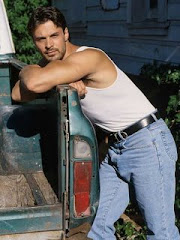A little lesson in forgotten history: 85 years ago this summer, the fastest way to get from one side of the country to the other was by way of a startling innovation: a transcontinental route that wedded trains with planes to deliver you from New York to Los Angeles in only 48 hours! Which was a whole day and a half quicker than the fastest train connections at that time.
The 27-year-old Charles Lindbergh, still idolized by the public for his solo transatlantic flight just two years previously, was one of the organizers of this venture, the airline part of which was called
Transcontinental Air Transport, working in partnership with two of the biggest and best American railroads, the
Pennsylvania and the
Santa Fe.
 |
| As with all the images, click to enlarge. |
The first trip westbound from New York to Los Angeles commenced at 6:05 p.m. on July 7, 1929; one-way fare was $351.94, equivalent to $4790 in today's dollars (see
measuringworth.com, a handy little site for converting money figures past and present). Passengers travelled in Pullman sleepers overnight to a new airport near Columbus, Ohio, where they left the train and boarded a
Ford Tri-Motor, a highly reliable, state-of-the art aircraft seating ten passengers in comfy wicker chairs with seat belts, each one next to an operable window. While the pilot and co-pilot kept the plane on course towards stops in Indianapolis, St. Louis, Kansas City, Wichita, and Waynoka, Oklahoma, a uniformed steward served drinks and meals. No stewardesses in those days - aviation was considered "a man's job."
 |
| Scenes of the trusty Ford Tri-Motor in flight. |
In Waynoka, reached after a full day of flying at about 2500 feet and 100 miles per hour, passengers boarded a Santa Fe train and slept again in Pullmans while speeding through the night to Clovis, New Mexico, where again they boarded another "Tin Goose" to fly to Albuquerque, Winslow and Kingman, Arizona, and finally landing in Los Angeles late in the afternoon. There, passengers bound for San Francisco had the choice of taking an overnight train or going by a connecting flight the next morning.
Unfortunately, the airline never turned a profit, and business was not helped by a couple of ugly crashes - due to bad weather or mid-air collisions in those pre-radar, pre-FAA days - that killed all aboard. Critics and scoffers said TAT meant "Take a Train." Nevertheless, in the first year of operation, 30,000 undaunted passengers made the trip.
In November 1929, TAT merged with a competing western airline, and the result was, several mergers later, the very successful, globe-spanning
TWA system. However, by 1932 aviation technology had improved to the point that night flying was possible, making the coasts only 24 hours apart, so the partnership with railroads quickly became unnecessary.
Still, it was the latest, greatest,
coolest swellest thing for its time - now merely a quaint memory, but no doubt pretty amazing then for those who could afford the fare. For further reading, see
this 1975 American Heritage article.







.jpg)































































